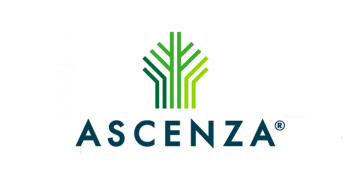Once again this year, European farmers are facing a very poor harvest. The 2022 and 2023 harvests were already among the worst in a decade, with cereal production at historic lows. Unfortunately, 2024 is shaping up to be even worse, with expected output at least 9% below the 10-year average. The reality is that since 2000, EU cereal and oilseed yields have stagnated. When oilseed production did increase, it was mainly due to an expansion in acreage rather than yield improvements. When cyclical downturns become recurrent, it indicates underlying structural issues that can no longer be ignored.
The stagnation in yields, and even the decline in production, can be attributed to a variety of interconnected factors, with climate change undoubtedly being a central driver. Over the years, extreme weather events have become more frequent, leading to severe losses—whether from droughts, such as in Spain in 2023, where over 40% of production was lost, or from excessive rainfall and flooding, as seen with the ongoing Boris storm.
Changing weather patterns have also affected pest and disease pressure. We are now witnessing the emergence of new pests adapted to warmer conditions, as well as an increase in the prevalence of existing ones. Similarly, excess water in some regions has led to disease outbreaks at levels never seen before. Meanwhile, the range of tools available to farmers to combat these pests and diseases is continuously shrinking. While there were around 900 active substances available in the EU in 2001, today there are fewer than 470.[1]!
The reality is that alternatives, such as biocontrol methods, are being made available at an unacceptably slow pace. On average, EU farmers lose around 16 conventional active substances each year, while only gaining around 6 new alternatives—most of which are not suitable for open-field use and currently do not compare on efficacy[2]. When it comes to combating droughts, the emphasis is on developing new crop varieties adapted to extreme weather conditions. But even in this area, progress has stalled. Without new tools, such as New Breeding Techniques (NBTs), which are still not authorized in the EU, it will be difficult to advance quickly enough to enable the most affected Member States to continue production. In this context, it is unfortunate that the Draghi report glossed over this crucial aspect of our competitiveness.
Another significant factor affecting EU cereal and oilseed production is the increasing weed pressure observed in recent years. While we still lack comprehensive data on the extent of this increase, it is clear that farmers are finding it increasingly difficult to control weeds. As with pests and diseases, good agricultural practices can significantly reduce weed pressure, but only when used in conjunction with phytosanitary products of any nature (conventional, biological…). The issue, once again, is that fewer and fewer substances are available, leading to increased resistance. It should be remembered that failure to control weeds will inevitably lead to an increase in health risks, such as ergot, which is an alkaloid producer.
Loss of productivity and quality means de facto loss of sales profits as well as a lower security of supply from European production in the areas of food, animal feed and feedstock for biofuels. Unfortunately, on top of this loss of productivity, farmers have also faced a double penalty over the past three years. First, since COVID-19, production costs have surged dramatically, particularly those related to fertilizers. This issue was further exacerbated by the war in Ukraine, which caused fertilizer prices to skyrocket (Urea, for example, rose from around €200 before the war to €1,000 at its peak, and now stands at approximately €400). Fertilizers account for 30% to 50% of cereal and oilseed production costs, depending on the region.
The second issue stems from the liberalization of trade with Ukraine to support its war effort, which has flooded the EU market with Ukrainian cereals and oilseeds at very low prices. Cereals imports from Ukraine increased from 9 million tons per year to over 18 million tons—equivalent to around 7% of EU production—while oilseed imports rose from 5.5 million tons to 8 million tons, representing approximately 25% of EU production. At the same time, the EU did not reduce its imports from other third countries, while its production and consumption remained stable. This led to an oversupply in the EU market, driving prices down to unsustainably low levels[3][4].
More than ever, it is time for the EU to take decisive action to restore the ambition of its cereals and oilseeds’ sectors, both in the short and long term. We must continue to support Ukraine, but a balanced approach is needed. The ongoing revision of the Association Agreement with Ukraine must include safeguards to limit imports and ensure a fair level playing field in terms of production standards. A competitive environment for fertilizers must be established, guaranteeing EU farmers access to fertilizers at prices comparable to those available to their counterparts worldwide. Finally, when it comes to providing farmers with the tools needed to cope with the consequences of climate change, the EU must address the issue with much greater urgency. There are many potential avenues to explore, but finding solutions will require significant investments, a pragmatic approach grounded in reality, and strong political will.
On Monday morning, during the SCA meeting, the Hungarian Presidency placed the cereals and oilseeds sectors on the agenda. We hope that Member States will take this opportunity to examine the reality of the situation facing these strategic sectors in the EU and begin the necessary work to develop structural solutions to structural problems.
EU farmers have faith in the future and are willing to work towards finding solutions, but they cannot do it alone. The support and commitment of the EU institutions are essential.
Fonte: Copa Cogeca





















































